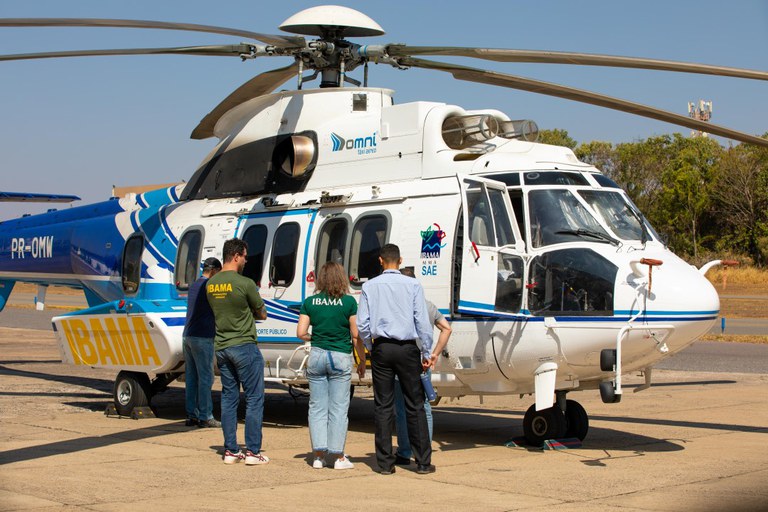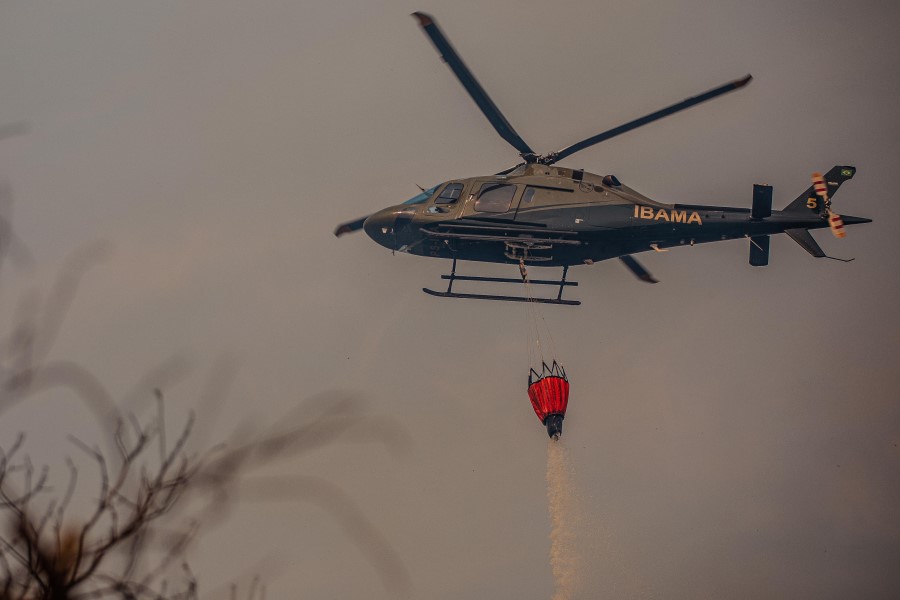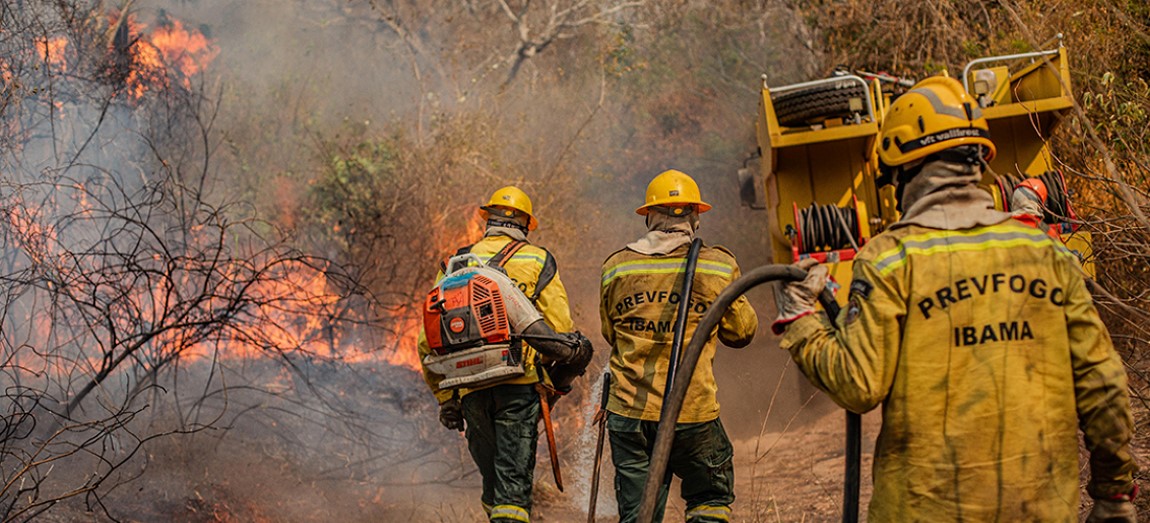Notícias
ENVIRONMENT
IBAMA expands helicopter fleet to fight wildfires affecting the country

IBAMA uses helicopter to intensify the fight against wildfires in Brazil - Credit: Luan Marcel / Ibama (Ascom)
Five additional foreign helicopters are now available to the Brazilian Institute for the Environment and Renewable Natural Resources (IBAMA) to combat wildfires affecting Brazil's biomes. In total, ten aircraft are ready for these operations. On Monday, September 2, IBAMA received the last of the five newly chartered helicopters: a large twin-engine aircraft that will be deployed to Corumbá, in Mato Grosso do Sul, to assist in fighting fires in the Pantanal.
The other chartered helicopters are single-engine. Two aircraft are already in action in the Pantanal (Mato Grosso do Sul); one is in the Xingu Indigenous Park region (Mato Grosso); and another is in the Araguaia region (Tocantins). The single-engine aircraft charter contract has a duration of four months, while the two-engine aircraft will remain in IBAMA's possession for six months and can also be used to provide logistical support for operations in various regions of the country.
ACTION — According to IBAMA, the aircraft will carry firefighters and equipment, and combat the flames with a heli-bucket. This device allows helicopters to drop water on the fire using a large bucket attached to the cargo hook. The twin-engine aircraft has an advantage over single-engine models in firefighting, as its heli-bucket can release approximately 2,500 liters of water at once, compared to the 500 to 800 liters released by the buckets on single-engine aircraft.
The increased capacity is crucial, particularly in degraded forest areas, as it allows larger volumes of water to penetrate through the treetops and reach the fire more effectively. Additionally, the ability to transport up to 18 firefighters per trip is another advantage of this larger aircraft.

- IBAMA's aerial operation in the Pantanal: helicopter drops water to contain fires - Image: Augusto Dauster - Prevfogo/IBAMA
HIRING — Hiring the helicopters was made easier by Provisional Measure No. 1.240/2024, published by the Federal Government in July. The measure provides for changes to the Brazilian Aeronautics Code and authorizes the use of foreign-registered aircraft in firefighting and emergencies.
The change allows the immediate use of airplanes in the preservation of the biomes and species of the Brazilian flora, allowing firefighting services to be carried out by aircraft and crews of other nationalities in cases of public calamity or environmental emergencies.
According to the National Civil Aviation Agency (Agência Nacional de Aviação Civil / Anac), Brazil currently has 22 companies authorized to provide firefighting services. Previously, these services were carried out using small aircraft. However, with the recent publication of the Provisional Measure, larger aircraft, which are available in other countries, will now be permitted for use within Brazil.
PANTANAL — Of the 112 fires recorded in the biome so far, 71 have been extinguished, 18 are active, and 23 are under control. These efforts are overseen by the task force led by the Center for Preventing and Fighting Wildfires (Centro de Prevenção e Combate aos Incêndios Florestais / Prevfogo), which is affiliated with IBAMA. The work has been ongoing since June in the states of Mato Grosso and Mato Grosso do Sul. Currently, the task force includes 18 aircraft and 48 vessels from the Federal Government.
Prevfogo has utilized logistics to ensure access to remote areas and implement effective strategies, such as deploying water via aircraft and opening firebreaks (strips of land cleared of vegetation) with ground teams. Prevention and awareness-raising initiatives through Environmental Education, aimed at mitigating new fires and promoting sustainability, are also integrated with direct firefighting efforts.

- Prevfogo team fighting fires in the Pantanal - Image: Augusto Dauster - Prevfogo/IBAMA
Between January 1 and September 1, 2024, a total of 9,175 hotspots were recorded in the Pantanal, with 72.6% of these concentrated in Mato Grosso do Sul, according to the National Institute for Space Research (Instituto Nacional de Pesquisas Espaciais /INPE). The Environmental Satellite Applications Laboratory at the Federal University of Rio de Janeiro (Laboratório de Aplicações de Satélites Ambientais da Universidade Federal do Rio de Janeiro - Lasa/UFRJ) estimates that approximately 17% of the biome's total area, or about 2.5 million hectares, has already been burned.